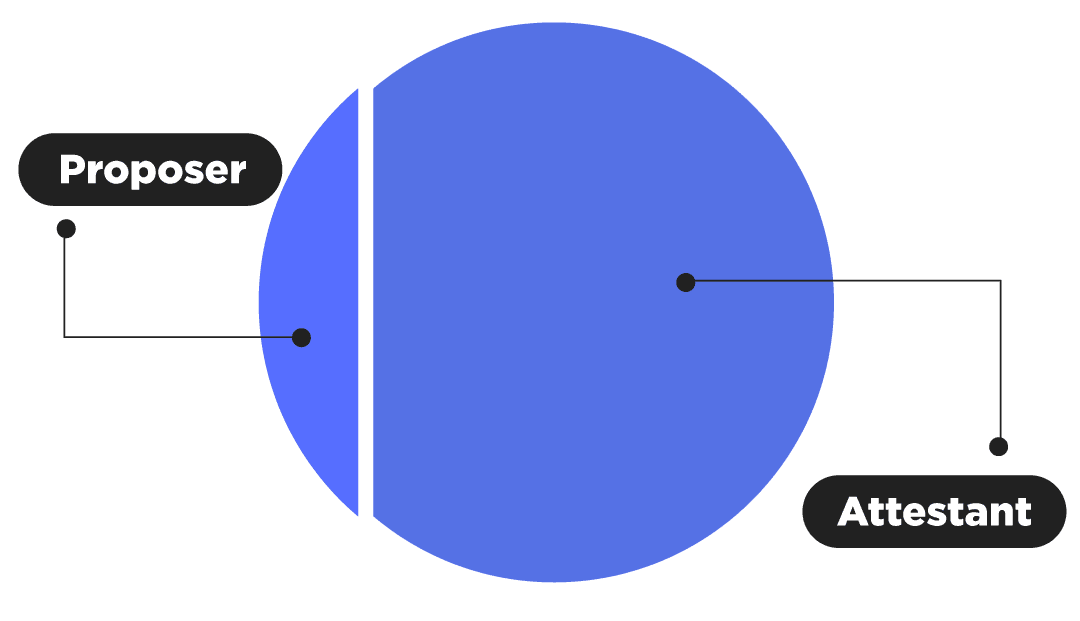Our partner, XM, lets you access a free demo account to apply your knowledge.
No hidden costs, no tricks.

Ethereum 2.0, also called The Merge, is an upcoming upgrade that will try to improve the Ethereum network's security and speed by making different changes to the blockchain, most notably removing the Proof-of-Work protocol and fully migrating to the Proof-of-Stake protocol. Because of this, some may start looking into mining other cryptocurrencies such as bitcoin.
Ethereum upgrades will be shipped starting in late 2022 and will finish somewhere in early 2023.
Because of these changes, Ethereum mining will become meaningless and the whole Ethereum operation will move to staking. So what is this move all about and what does it mean for Ethereum going forward? Let's take a look.


With recent trends and successes of many DeFi projects such as NFTs and balancers which are built on the Ethereum blockchain, Ethereum transactions have become costly and time-consuming. Consumers are willing to pay hefty gas fees in order for their transactions to go through fast and those who can not afford those fees have to usually wait days to see their transactions go through and in some cases, their transaction orders get canceled altogether.
These gas fees fund actual applications which operate on the Ethereum blockchain and not just transactions. This makes DApps, which are built on the Ethereum blockchain, hard and expensive to operate.
To fix these problems, the Ethereum development team has announced that they will be making system and operational changes to the Ethereum blockchain, which will make the network operate faster, cheaper, and more efficiently. These changes will allow the blockchain to undertake more transactions and accommodate more use options. Right now Ethereum can handle 15 transactions a second. Compare it with other blockchains such as Solana which can handle 90,000 transactions a second, and you can see what kind of improvements are coming.
These upgrades, as we mentioned in the beginning, will replace the current PoW protocol with the PoS protocol. What this means is that anyone who has enough Ethereum tokens to meet minimum staking requirements will be able to stake their tokens to validate transactions and earn interest from them. Ethereum staking can be done on famous exchanges such as Coinbase and Binance, as well as through joining staking pools.

With the removal of the PoW protocol, Ethereum mining will be gone and fully changed to staking. Staking is when the blockchain selects a validator who will be in charge of validating transactions and creating new blocks. Validators are chosen by the number of tokens they have staked. The more you stake, the higher your chances of being selected. There are also some levels of randomization, so you don’t necessarily have to be the person who staked the most to be selected. There are also staking pools to make sure you get selected as the validator.
Validators are those who process transactions, store data and add blocks to the blockchain. Validators then receive interest on their staked Ether. This reward will be in the form of Ether as well.
Beacon Chain divides stakers into groups of 128 and assigns them to one shared block. Each group is then allocated a slot and has a fixed time to validate the transactions inside the block. There are 32 slots in each block which require 32 groups to complete the validation process.
When a group is assigned to the block, this block will randomly select one validator from the group. This one validator will be the one proposing a new block of transactions while the remaining validators from the group will vote on the submission and validate the transaction.
The Beacon Chain takes information from the shards, which are pieces of the blockchain, and shares them with the neighboring blocks to keep the network in sync.
This new block is then added to the blockchain and bonds with other blocks to authenticate its addition to the blockchain. The staker who got selected to propose a new block from those 128 stakers, will receive their reward only after this bond happens.
Once this block gets on the blockchain, it can not be changed and when this happens Casper, a protocol that finalizes this proof-of-stake, selects a new set of validators to validate that the block is fully complete and finishes the proof-of-stake process.
 Ethereum 2.0 uses annualized interest rates and the inverse square root function to calculate the rewards the validator receives. What this means is that stakers who have staked more, receive higher rewards.
Ethereum 2.0 uses annualized interest rates and the inverse square root function to calculate the rewards the validator receives. What this means is that stakers who have staked more, receive higher rewards.
As we mentioned before, there is one validator who proposes a new block and the other 127 attest to it. This person who proposed the new block receives ⅛ of the reward, while the rest goes to those who attested to it. But this number can go down if validators don’t attest to it really fast.
Users can stake Ethereum in different ways. You can either go solo or join the staking platform. When you go solo, you are in control of everything and no one can decide what you are going to do. But if you use the services of an exchange that has Ethereum staking available or join a public Staking Pool, the job is done for you. They set up and even run nodes for you, and all you have to do is deposit the minimum required amount for staking. But here you are not in control, only the operator, who operates the pool, will have access to the private keys of the nodes and will be in charge of your assets.
Using third-party services for staking Ethereum is an easy process as you just have to deposit Ethereum and wait for interest to come in. Going solo and doing the hard work yourself is when things get complicated and expensive.
The first thing we need to do when going solo is to select software that will set up nodes for us. We will also require really large amounts of free computer storage, as we have to download both old and new Ethereum blockchains. This will not be a small feat, as Ethereum 1.0 already has 900 terabytes of data and is constantly growing.
Also disconnecting your nodes from the internet is not allowed. This means that it is a must to have a good internet connection, to ensure your operation goes smoothly. When these nodes are set up, we need to send 32 Ethereum to start staking.
To finish this process we would need to generate two keys. One key will be used for validating transactions, while the second key will be used for withdrawal. But until the merge, this withdrawal key won't be generatable.

When the Ethereum network works to decide how much the rewards should be, it looks at how much Ethereum has been staked and how many validators there are. When the amount of staked Ethereum is low, rewards go up, and so do interest rates. When the amount of staked Ethereum goes up, interest rates fall. But keep in mind that staked Ethereum, as well as earned Ethereum rewards, will not be withdrawable until the merge.
Ethereum staking is more decentralized compared to mining. Here, unlike mining, utilizing more nodes does not imply higher profits. This means that you are not dependent on having powerful software to compete with other stakers. This means that investing in Ethereum staking will be more accessible.

If you are planning for a long-term investment, you should know the value of Ethereum 2.0 is unclear. This means that we don’t know if our current investment will return profits. If you believe in the project, then staking Ethereum is one of the best investments you can make.
No option for withdrawal is another problem that you will face. There is a lack of liquidity as the withdrawal option will not be available until Ethereum 2.0 is fully released and merged with Ethereum 1.0, which might not happen until late 2023. If you are a long-term investor, then this problem does not concern you.
There is also the risk of losing all of your earned rewards, along with the Ethereum you staked. When validators are not able to validate the transaction, and it fails, they receive punishments, one of the punishments is removing all of your investment and rewards. So just know that you must have a perfect system in place to make sure this does not happen to you.
Our partner, XM, lets you access a free demo account to apply your knowledge.
No hidden costs, no tricks.
If you want to have control over everything, going solo and staking yourself is the best way to stake. But you will need to have an understanding of how this system works. If you want more comfort and prefer to leave staking management to an experienced third-party, then staking Ethereum on platforms such as Binance is the best way to stake.
This depends on your preferences. Different pools offer different deals, and we should choose whichever we like more. The most famous pools are Rocket pool, Ankr, Lido, and Allnodes.
If you want to operate on your own, you would need to stake at least 32 ETH in order to receive rewards from staking. But if you join the staking pool you can start staking with way less. Each pool has its own minimum requirements.